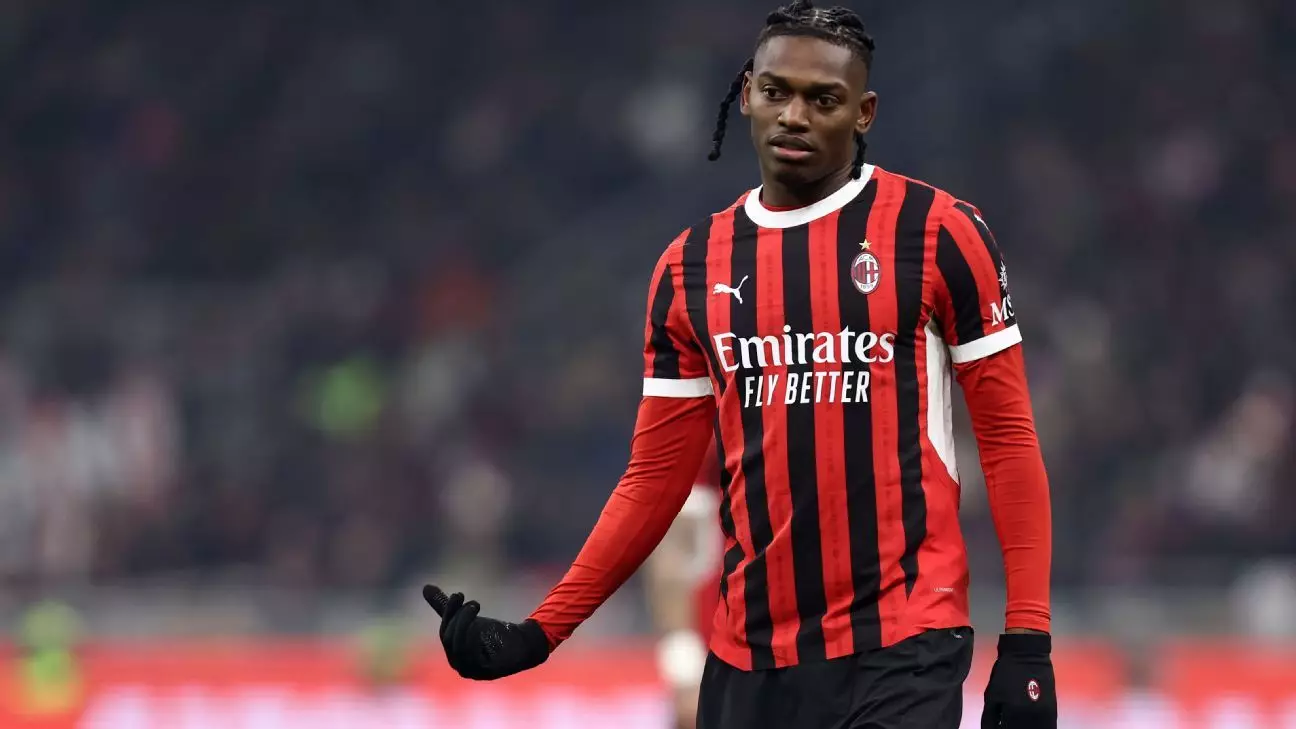In today’s football ecosystem, the transfer market has transformed into a high-stakes arena where financial strategies and player ambitions collide. Clubs are no longer just interested in acquiring talent—they are meticulously calculating the value, potential, and the strategic importance of each player. Barcelona’s recent stance on Rafael Leão exemplifies this shift. Despite intense interest and significant offers, the Catalan giants have been advised that a formidable €70 million plus variables might persuade AC Milan to part with their prized winger. This figure reflects more than just monetary value; it’s an emblem of Barcelona’s unwavering pursuit of top-tier talent amid financial constraints. The club’s cautious approach underscores how economic considerations have become inseparable from competitive ambitions, often delaying signings until the financial landscape becomes more transparent.
Meanwhile, Bayern Munich expressed a keen interest but ultimately stepped back due to Milan’s valuation. Such scenarios highlight the delicate balancing act: clubs must assess the true worth of a player beyond initial offers, often waiting for market conditions to shift or for the club’s financial health to improve. The core takeaway is that transfer negotiations today aren’t purely about player desire or club needs—they’re complex economic chess games, where the highest bid isn’t always enough unless it aligns with club valuation and strategic planning.
Clubs Under Pressure: The Race Against Time to Secure Key Signings
The urgency to secure new signings has never been more palpable. Arsenal’s pursuit of a prolific striker illustrates the intense pressure managers face in shaping competitive squads swiftly. Under Mikel Arteta’s leadership, the club aims to finalize a deal within a fortnight. The delay over Viktor Gyökeres’ negotiations with Sporting CP exemplifies the fragility of transfer plans; an inability to strike a deal could push Arsenal to pivot swiftly toward alternative options. The club’s cautious stance on Benjamin Sesko’s valuation—standing firm at around £60 million—further demonstrates how financial negotiations can derail timelines, especially when competing clubs, like RB Leipzig, hold firm on their price tags.
This scenario isn’t unique. European clubs are all racing against the clock, balancing financial prudence with sporting ambition. For managers and fans alike, the pressure is to see new arrivals as soon as possible, fostering team cohesion and providing new tactical options. The window of opportunity is narrow, and failure to act swiftly can lead to missed opportunities, especially when dealing with high-profile targets who are also courted by other clubs.
The Transfer Frenzy: Strategic Moves and Surprising Decisions
Recent transfer activity reveals a landscape shifting under the weight of financial considerations, strategic repositioning, and individual player desires. Nico Williams’ decision to decline Barcelona, choosing instead to sign a 10-year deal with Athletic Club, signifies a fascinating trend: players’ willingness to prioritize stability or personal loyalty over the allure of a giant club. Barcelona’s shift in preference towards Luis Díaz, with Marcus Rashford as a secondary option, underscores how clubs are increasingly hedging their bets—targeting multiple potential signings based on evolving interests and market availability.
Rashford’s willingness to accept a salary reduction for a move to Barcelona is emblematic of players’ rising agency within negotiations. The contemporary footballer is more than just a commodity; they leverage their value and aspirations to shape transfers. On the other hand, clubs like Manchester United remain cautious, valuing Rashford at £40 million and wary of offering a loan, suggesting a desire to secure compelling financial terms amidst a transforming transfer market.
Meanwhile, clubs such as Juventus are contending with their own dilemmas, like the ongoing saga involving Jadon Sancho. Juventus’s negotiations with Manchester United reveal the intricate dance of swaps, cash offers, and salary considerations, with Sancho’s willingness to accept a pay cut providing hope but not guarantees of immediate success. Such negotiations showcase the nuanced layering—clubs aren’t just acquiring players; they’re engineering complex deals that serve long-term tactical and financial goals.
The Impact of Financial Power and Strategic Alliances
The transfer market has become a battleground for clubs with evolving financial power and strategic alliances. The reported interest of Al-Hilal in Victor Osimhen and Theo Hernandez exemplifies how oil-backed clubs are venturing aggressively into the European transfer market, willing to make “huge” offers to bolster their squads. These moves are not solely about securing talent but about increasing global football influence, often disrupting traditional transfer hierarchies.
Meanwhile, clubs like Napoli, Juventus, and Atalanta are engaged in high-stakes bidding wars—each seeking to strengthen their squads or offload players for strategic reasons. Napoli’s cautious interest in Fiorentina’s Moise Kean and the possibility of moving for star striker Victor Osimhen if the right deal emerges illustrate the tactical flexibility of top Italian clubs. At the same time, English and Spanish giants continue eyeing promising prospects, from Benfica’s Orkun Kokcu to Genoa’s Koni De Winter, each deal reflecting a blend of strategic planning and financial positioning.
In the broader context, the transfer market now operates within a framework of strategic power plays—clubs leverage their financial might, player preferences, and tactical visions to navigate an increasingly complex landscape. The rise of lucrative offers from the Middle East and Asia signifies a shift in the global power balance of football, challenging traditional European dominance.
—
Note: This analysis critically examines the article’s depiction of modern football transfers, highlighting economic strategies, timing pressures, player agency, and the influence of global financial power. It challenges the traditional notion of transfers as simple negotiations, emphasizing instead the complex interplay of finances, ambitions, and strategic moves shaping the beautiful game today.

Leave a Reply